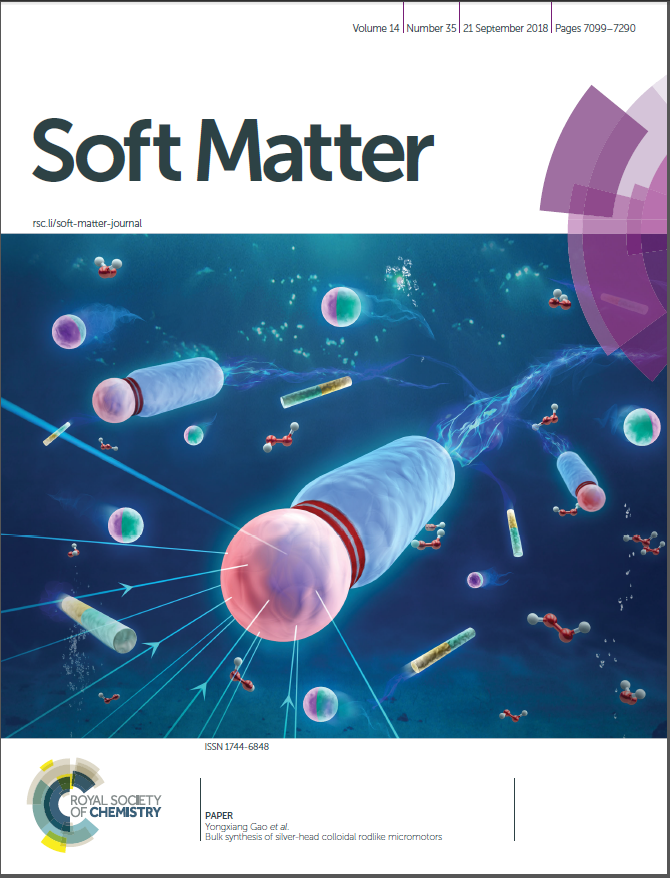Research scientist Gao Yongxiang from IAS has made major breakthroughs in batch synthesis of rod-like colloidal motors. The result "Bulk synthesis of silver-head colloidal rod-like micromotors" was accepted by Soft Matter and was invited as a cover paper (10.1039/C8SM00832A). Gao Yongxiang is the first and communication author, Shenzhen University as the first completion and communication unit.
Suspension of micro-nanoparticles in a liquid causes random and slow random motion, which is called Brownian motion. Micro-nano devices or robots need to speed up and surpass Brownian motion to perform tasks efficiently in liquids. The life system accomplishes this by injecting chemical energy into the monomer. Inspired by this system, it has become a frontier field of multidisciplinary intersections in chemistry, physics, materials, and medical engineering to develop the non-living micro-nano particles or colloidal motors that can transform chemical energy into motion in the last ten years. The development of high-yield, low-cost and high-performance granules has been quite popular in facilitating the expansion of colloidal motors in the basic research and practical applications of active materials.
In collaboration with Professor Dirk Aarts and Roel Dullens from University of Oxford, researcher scientist Gao Yongxiang developed a method based on Pickering emulsion and silicon dioxide directed growth to achieve mass synthesis of silver silica double sided colloidal rod-like particles. Traditionally, colloidal motors rely on precious metal platinum, and the preparation process is complex with low-yield. This work breaks through the dependence on platinum to achieve mass production. What's more important is that the colloidal motor has superior motion efficiency. At the same speed, our particles reduce the required hydrogen peroxide (motor fuel) concentration of the motor by two orders of magnitude. We expect this work to further expand the application of colloidal motors, especially when large numbers of particles, low cost and low oil concentration are necessary.

The schematic diagram of the growth mechanism of silver-silica double-faced particles and its typical motion trajectory in hydrogen peroxide.
Full-text links:http://pubs.rsc.org/en/Content/ArticleLanding/2018/SM/C8SM00832A#!divAbstract


